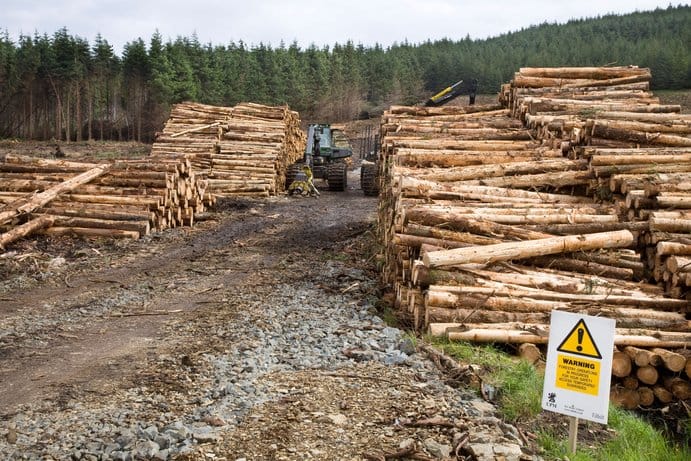
protect our countryside
say no to greencroft commercial forest
This isn’t a woodland for people. It’s not a nature reserve.
It’s not a community forest.
This commercial forest will destroy the landscapes of Greencroft, Maiden Law and Lanchester as we know them.
Up to 65% of this 290-hectare forest will be an industrial Sitka Spruce timber plantation – a fast-growing, non-native conifer linked with biodiversity loss, flooding, degraded watercourses and sterile monocultures. That’s over 120 football pitches worth of our beautiful local landscape turned into an industrial forestry zone with farmers removed from their pastureland.
We feel Greencroft Forest Park prioritises productivity over biodiversity and brings irrevocable detrimental environmental, ecological and social damage.
A vast commercial forest the size of 120 football pitches is being planned on our doorstep.
“…creating new woodland involves ploughing, ripping, scarifying and mounding.” www.gov.uk
Known as Greencroft Forest Park, this 290-hectare industrial tree plantation would see around 600,000 trees planted in our local landscape — up to 65% of them Sitka spruce, a fast-growing, non-native conifer often linked with biodiversity loss, degraded watercourses, and sterile monocultures. That’s 390,000 Sitka trees, over 120 football pitches worth of land, turned into an industrial forestry zone.
This isn’t a woodland for people. It’s not a nature reserve. It’s not a community forest.
This is a commercial operation designed to extract timber on an industrial scale — at the expense of wildlife, water, and the rural tranquillity we hold dear.
They’re Not Telling Us the Truth!
The Greencroft Forest has been covered extensively in the media however, we question some of the statements made.
- “…herbicides would not be used at Greencroft Forest Park.” – bbc.co.uk
- The Forestry Commission documents detail the use of herbicides such as glyphosate and propyzamide and “other appropriate chemicals.” in its EIA Checklist 10b [read here]
- ‘Return of red squirrels[bbc.co.uk],’
- In general, monocultures offer poor support for biodiversity and are vulnerable to pests like the spruce bark beetle, which has been found in the UK and poses a significant threat to spruce trees[ii].
- “Proposals for walking and cycling paths[bbc.co.uk]
- Official Forestry Commission documents state that visitor infrastructure such as paths and car parks will be considered ‘at a future date if justified by demand’ – EIA Checklist 10b [read here]
- …”The forest, close to urban areas…will consist of 31 different species including conifers and broadleaf trees.The primary species will be sitka spruce which grows quickly.” – bbc.co.uk
- Sitka Spruce covers 65% of the forest, the maximum allowed of one species. Great Britain’s commercial wood products’ industry is primarily based on this species. Wood from Sitka spruce is sawn into timber for use in construction, pallets/packaging and fencing [iv]
- “Woodland creation is a form of natural flood management’
Banned in Scotland
The project is spearheaded by assets fund manager, True North Real Asset Partners[i] with Pryor & Rickett Silviculture (PRS), part of Euroforest Group, managing design and implementation.
The same parties were involved in the Stobo Hope Forest project in Scotland, now under Judicial Review following premature herbicide spraying before approval[v]”.
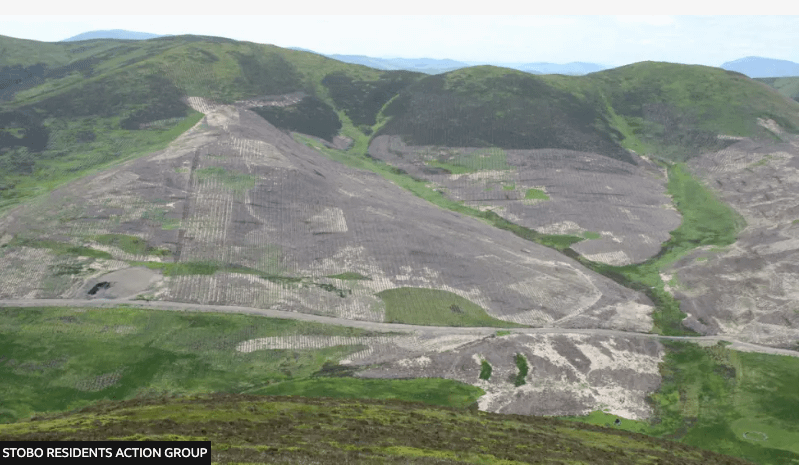
“… the use of herbicide to kill off heather and other plants; the failure to assess the impact of the fragmentation of the moorland on black grouse; the application to re-introduce fox hunting allegedly to control predators; and the inadequately marked deer fences which kill grouse.“
Where’s The Scrutiny?
The project is believed to have been granted over £3million in public funding via the Woodland Creation Offer[vi],
- PLUS £12,700 available in “stackable payments when delivering wider benefits to society, nature recovery and the environment”.
- PLUS an additional £5million if the owners apply to sell their carbon via the UK Woodland Carbon Code[vii]
- PLUS monies from the sale of timber
In contrast, the local economic benefit is calculated at £zero.
- “Forestry experts from Chopwell [Gateshead]“ www.chroniclelive.co.uk
- “Tree stock will be sourced from local markets such as Trees Please at Corbridge [Northumberland]…..By-products from the harvesting of the trees may end up in local markets such as the new Sustainable Aviation Fuel plant planned for Teesside, or at the Egger chipboard plant in Hexham [Northumberland].” www.greencroftforestpark.co.uk/the-benefits-of-woodland-creation/
To note, True North Real Asset Partners (not to be confused with the tax-haven registered True North EREP (Guernsey) with the same directors[viii] [iv]) is operating through the Forestry Carbon Sequestration Fund II[x], a Guernsey-based private investment fund[xi].
Specific details regarding the grant amount received for the commercial aspect of the Greencroft Forest Park have not been publicly disclosed. The project has received consent from the Forestry Commission, but financial particulars, including any grants or funding, are not specified in available sources.
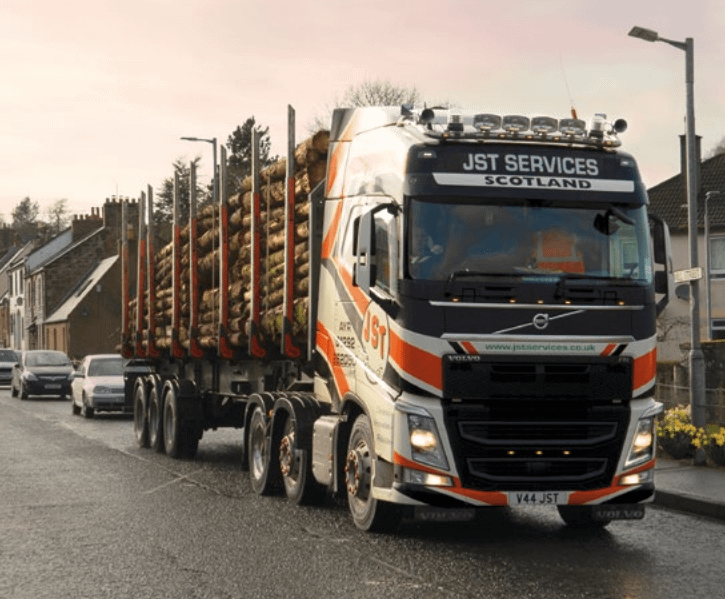
“The first timber yield is expected in 2045 and a total of 110,000 tonnes of sustainable homegrown timber produced in the first rotation.” Chroniclelive.co.uk
Commercial forests aren’t quiet, still places
Forests like this aren’t quiet, still places. They come with thousands of heavy vehicle movements. To harvest just 110,000 tonnes of timber (the first harvest alone), Greencroft Forest Park could require:
- 5,789 8-wheeler lorry trips, or
- 4,074 articulated lorry trips, or
- 3,928 44-tonne articulated truck trips (xi Timber Transport in the UK)
These trucks will thunder through our roads, bringing noise, pollution, and safety risks to our villages and communities for years to come.
The approved transport route includees the A691 passing St Bede’s School.
A Threat to Wildlife and Biodiversity
The Sitka spruce is not just non-native — it’s actively harmful to many native species.
Dense plantations shut out sunlight, acidify soil, increase flood risk, and disrupt fragile habitats.
- Red squirrels, already under threat, will lose habitat.
- Bats, identified in the local area by ecologists, could see roosting and feeding sites destroyed.
- Wetlands and watercourses could suffer from increased runoff and sedimentation, harming amphibians and aquatic life.
- In general, monocultures offer poor support for biodiversity and are vulnerable to pests like the spruce bark beetle, which has been found in the UK and poses a significant threat to spruce trees[i].
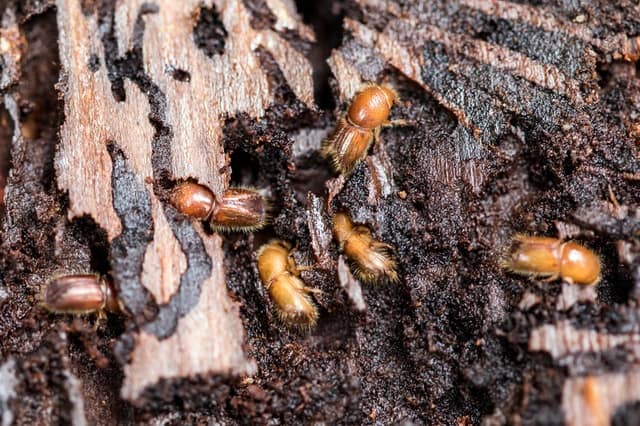
Image of Spruce Bark Beetles, taken from Global Wood Markets Info: “Bark beetles are ruining Swedish forests at a record pace“[i]
The Wood Beyond the Trees
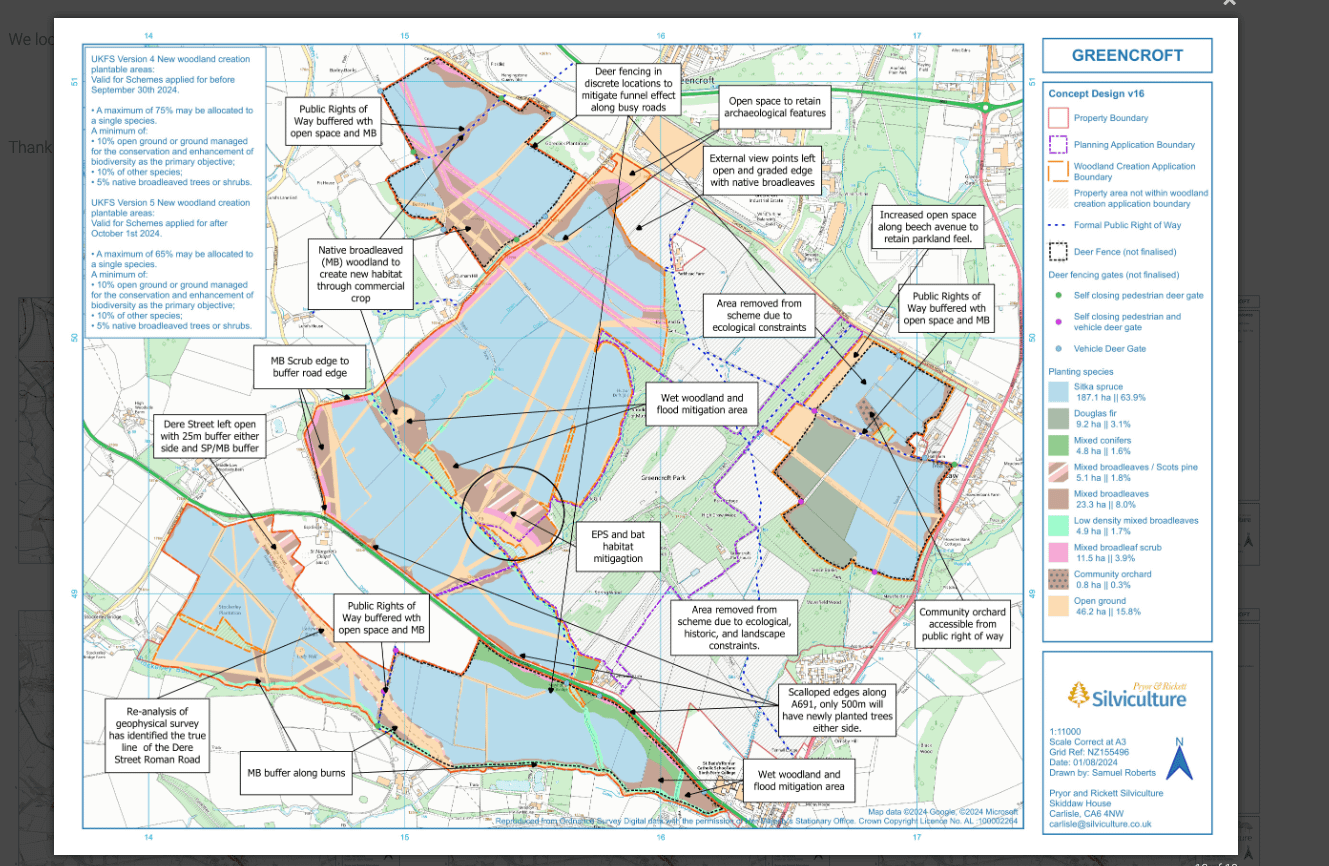
How Big is this Forest?
Massive!

Banned in Scotland!
Stobo Hope
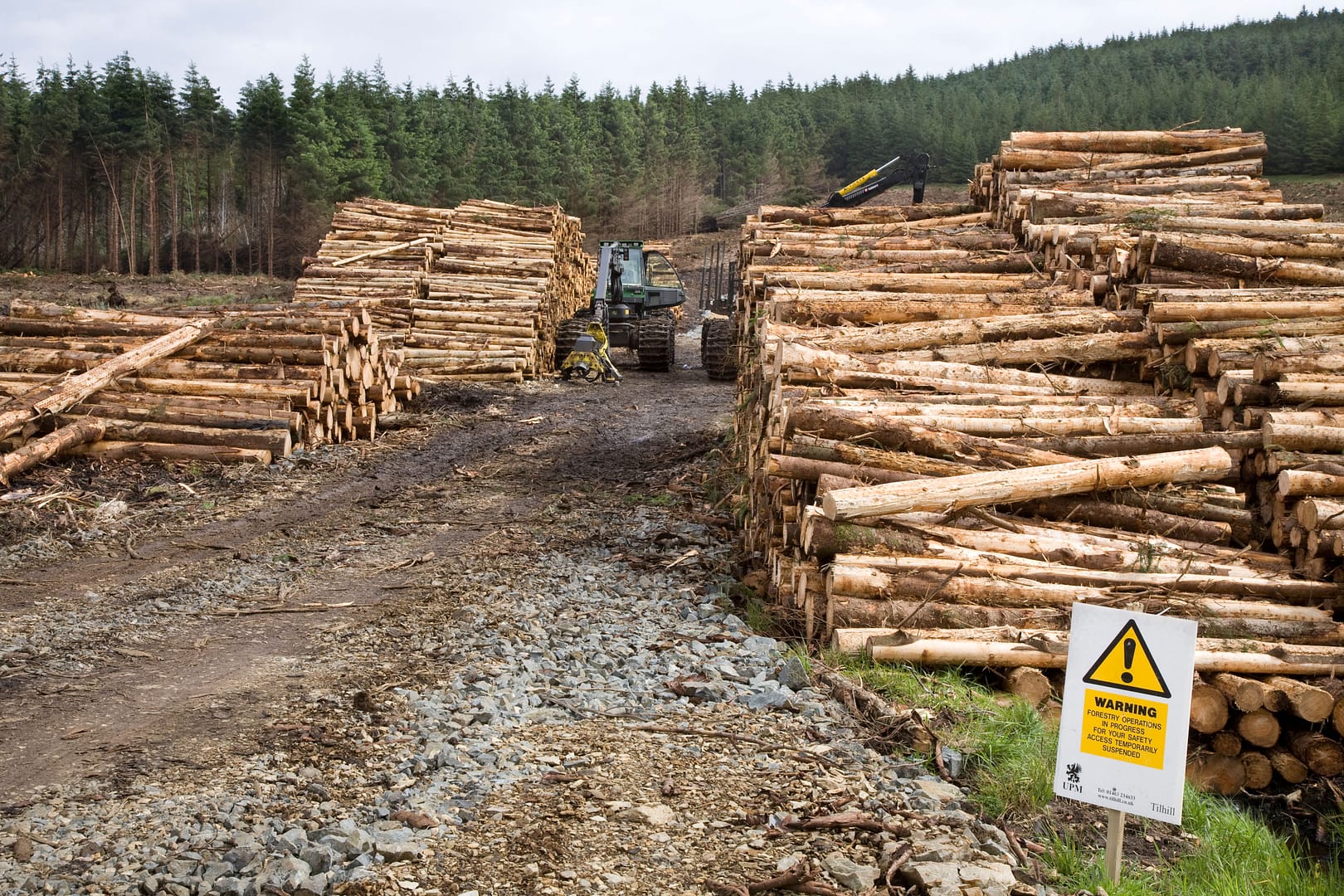
Save our Environment
Commercial Logging